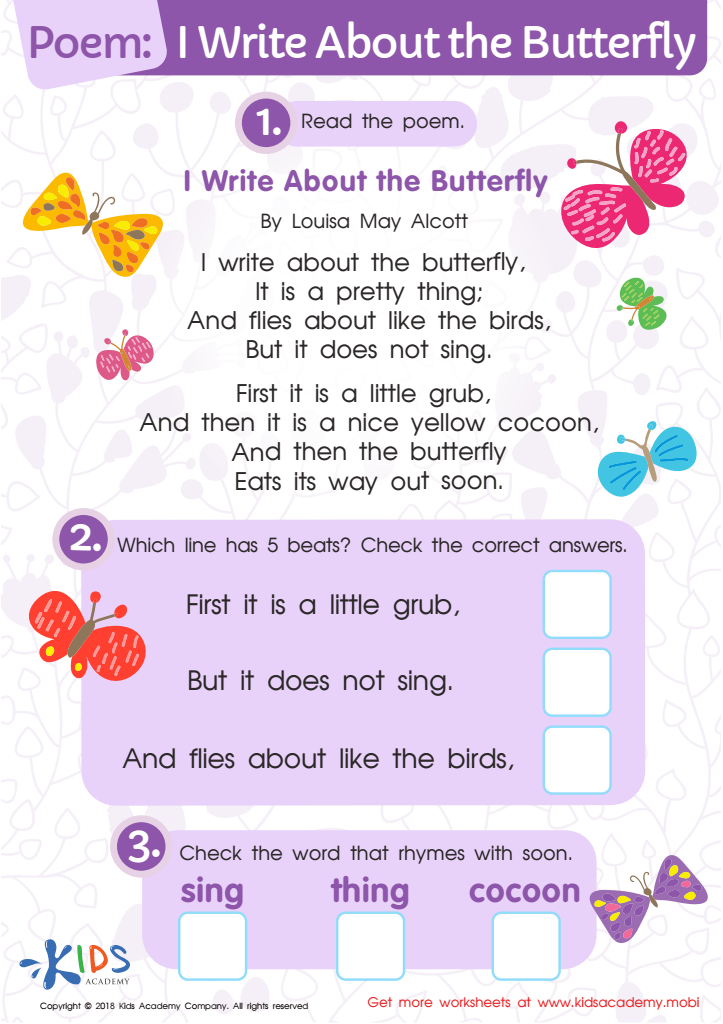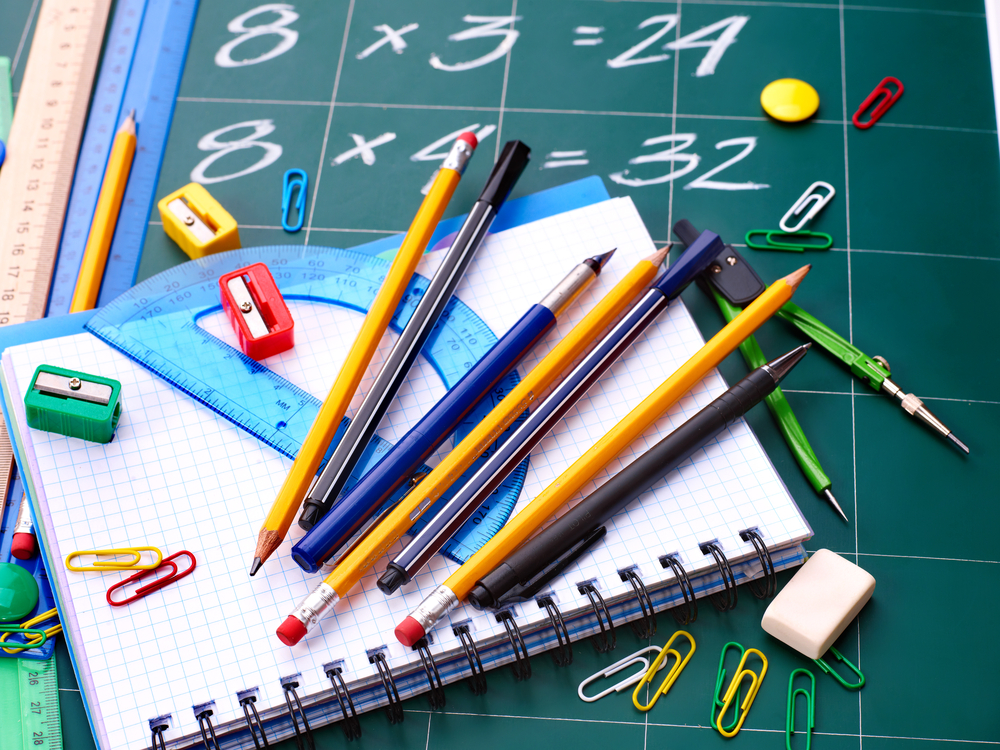Metaphor understanding Worksheets for Kids
1 filtered results
-
From - To


Poem: I Write About The Butterfly Worksheet
Question/Answer
How to train the Metaphor understanding skill in Grade 3 students learning about Reading Fiction?
To train Grade 3 students in understanding metaphors while reading fiction, introduce the concept with simple examples, explaining how metaphors compare two things without using "like" or "as. " Use interactive activities like matching metaphor cards to their meanings, creating metaphor art, and reading stories rich in metaphors.
How to test a Grade 3 student’s Metaphor understanding skills?
To test a Grade 3 student's understanding of metaphors, present them with simple sentences containing metaphors and ask them to explain what the metaphors mean. For example, use sentences like "The classroom was a zoo today" and ask what this implies about the classroom. This tests their ability to interpret metaphorical language and understand figurative meanings beyond literal interpretations.
Why is the Metaphor understanding skill important for Grade 3 students?
Understanding metaphors is important for Grade 3 students as it enhances their reading comprehension, boosts creative thinking, and improves their ability to make connections between different concepts. This skill helps them grasp the deeper meanings in texts, enriches their vocabulary, and lays a foundation for effective communication and interpretation of language, which are critical for academic success and everyday interactions.
 Assign to the classroom
Assign to the classroom












